How to grow hibiscus from seeds at home?
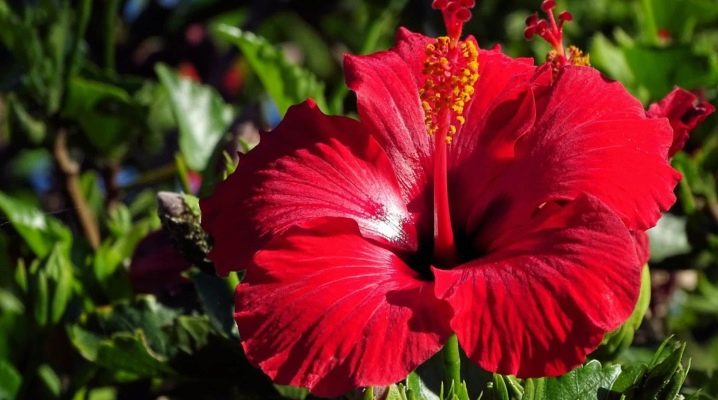
Hibiscus is a genus of plants in the Malvaceae family, often referred to as the Chinese rose or the Egyptian rose, although, of course, they have nothing to do with Rosaceae. Hibiscus has become widespread as cultivated plants due to its extraordinary flowers and unpretentious cultivation.
Peculiarities
The main thing when growing hibiscus is to find a suitable container and a place where it will grow. It is best to avoid direct sunlight when placing it.
Caring for this plant is simple, it is also important not to allow the soil to dry out, because it is an inhabitant of the humid African tropical forests.
Hibiscus blooms usually in early spring, blooms for a long time. A developed plant does not lose its attractiveness even in winter, resembling a small evergreen tree.
It is quite easy to propagate a flower. You can do this using cuttings - cut branches. A good result is given by dividing the bush, so from one overgrown hibiscus you can get several already sufficiently developed specimens at once. But hibiscus is also famous for one more feature - the ability to give numerous viable seeds even when grown indoors, which is not at all typical for tropical plants that find themselves in such conditions.
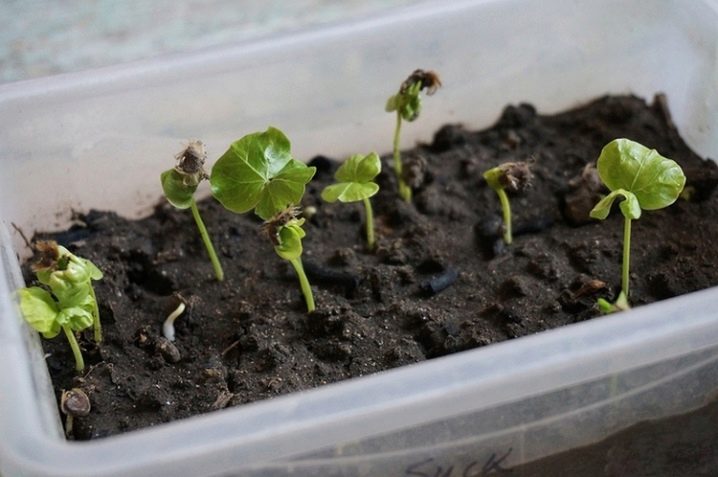
What do seeds look like?
Fading away, hibiscus forms rounded pods with seeds. As they mature, they dry out and begin to open, throwing out the seeds. It is difficult to confuse them with the seeds of other indoor or garden ornamental crops. They look quite massive, although the seed size usually does not exceed 3 mm. Normally ripe seeds are dark brown, almost black in color. In shape, a seed close to the shape of a circle is slightly pointed in the lower part, where the embryo is located, therefore some growers compare it with the symbolic figure of the heart.
The main difficulty is not to miss the moment of fruit opening. Collecting spilled seeds is not easy at all. The ripening of the fruit will be indicated by its color. The pods gradually lose their green color, becoming brown. Some growers suggest at this time to cover the plant with open paper bags that will catch the falling seeds. In this case, ripening will be natural, which will allow you to get more germinating seeds.
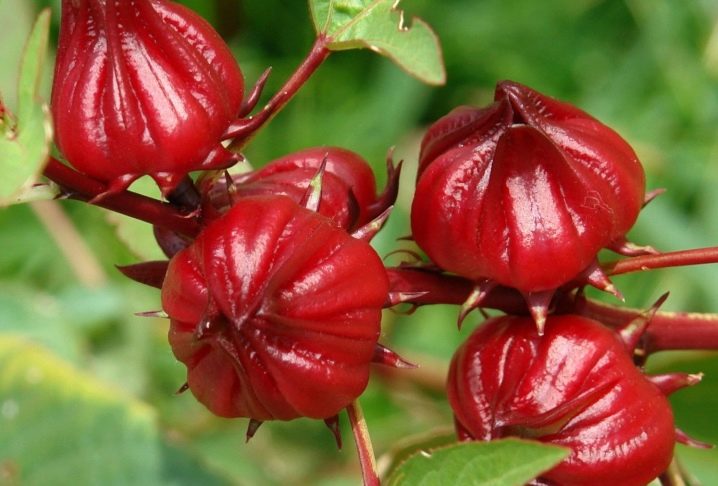
It is also possible to collect pods with their further drying and artificial opening with a knife. The seeds do not ripen at the same time, so their color will be different. In this case, there is a danger that some of the seeds will be immature. However, this method completely excludes accidental losses, the yield of planting material in the end turns out to be practically the same as in the first case. The collected seeds have to be sorted and sorted by hand. This is necessary to exclude immature or damaged instances. Loose seeds can spread mold and rot.
Professionals recommend using only the largest seeds for planting, which seems quite justified, since such material has a sufficient supply of nutrients and, as a rule, a healthy embryo.
Novice growers often keep all the seeds they receive, treasured by the first positive results of the cultivation of the Chinese rose. However, practice shows that pity in this case is inappropriate, since low-quality seed material can cause serious disappointment, since most often it does not justify expectations. And if the plant does miraculously rise, it will be very difficult to grow a weakened sprout.
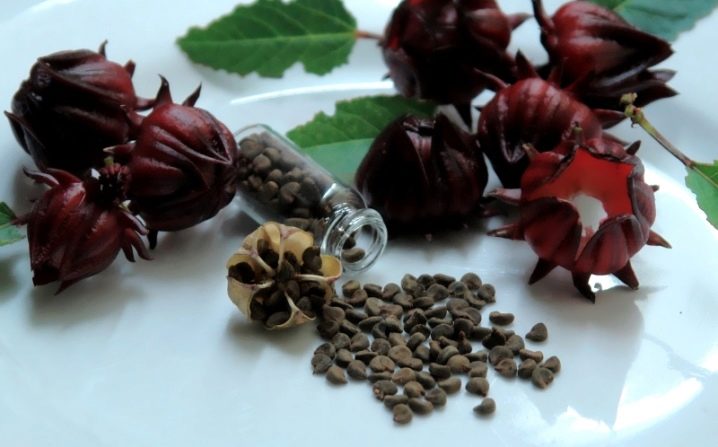
Pros and cons of growing
Breeding hibiscus with seeds is the most natural way to reproduce them. Its main advantages can be considered simplicity. It is not at all difficult to get viable seeds in the case of hibiscus, it will bloom quite quickly, already in the first year. It is not necessary to create special conditions for watering, lighting or air humidity. It is relatively easy to grow a flowering and fruiting plant at home. Reproduction by seeds allows you to stop the spread of infections that can infect a plant and that penetrate all its organs. Therefore, viruses will be present in cuttings with which hibiscus can be propagated.
The seed method of propagation also has negative sides. It will not be possible to obtain a copy of the mother plant in this way. During sexual reproduction, hereditary traits are combined in a random way, this is a way to increase the diversity of forms, which is very important for the preservation of the species in its natural habitat. When buying hibiscus seeds, you may encounter a substandard productfor example, spoiled or insufficiently ripe seeds. There is never enough confidence that a plant will grow from the purchased planting material with exactly the properties that are indicated in the description.
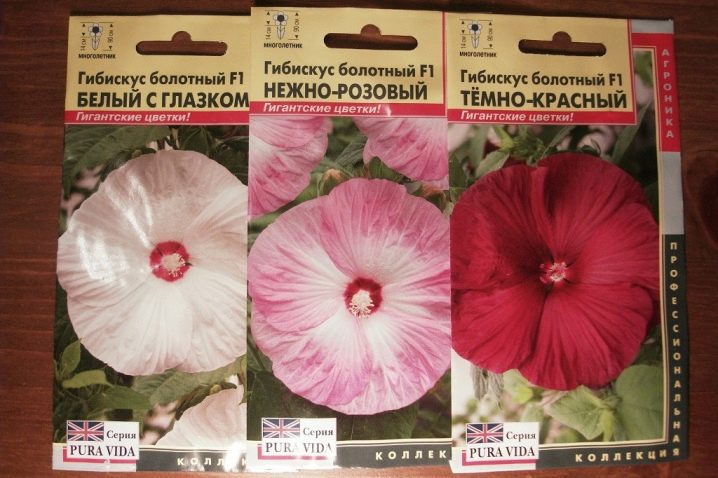
Preparation
To grow hibiscus from seeds, you should seriously prepare for this. You also need some equipment. First of all, you need a wooden or plastic box. It needs to be filled half the depth with a nutrient substrate - specially prepared soil. You will also need a container for irrigation with a spray function (a simple sprayer or spray bottle will do). In order to create a greenhouse effect, you need to prepare a suitable size glass or a piece of transparent plastic, in the most extreme case, polyethylene.
Before planting hibiscus seeds are recommended to be stratified - premises in conditions of artificial winter. This is believed to stimulate the onset of the embryo's development. This is how it is done. Prepared seeds are placed in a weak solution of potassium permanganate for about 1 hour. Then wet sand is placed in a container with them, all this should be in the refrigerator. In such conditions, seed material stays up to 2 weeks.
During this time, it is necessary to prepare the soil. At home, these plants grow on acidic soil. When forming the soil, you need to periodically measure its acidity. It is a good idea to enrich the soil with calcium. Also, one should not forget about drainage, therefore, it is better to fill the bottom part of the container into which it is planned to sow seeds with expanded clay. Fill the container with soil mixture by three quarters.
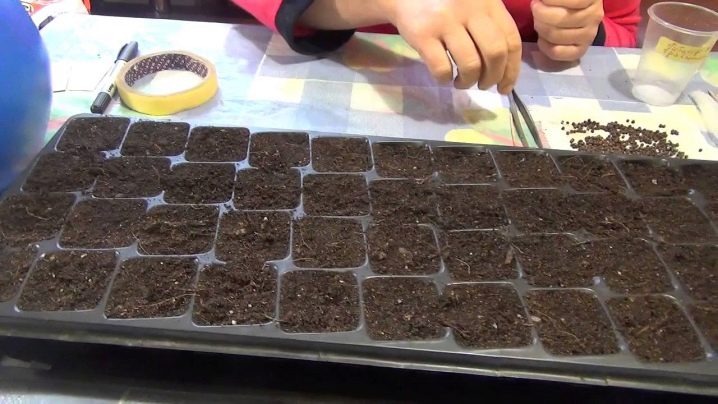
Landing
Seeds prepared by stratification must be germinated. When the soil is ready, you can sow. Before sowing, the soil in the pot must be moistened, it is better to do this by spraying. The seeds are placed on a layer of soil, then sprinkled with loose soil of the same composition up to 1.5 cm thick. The resulting surface must be sprayed again.
It is necessary to germinate in a room with an air temperature of about 28 ° C. A good result can be obtained if you take out a container with germinating seeds on a glazed balcony. When stable hot weather is established, if the windows are not opened at night, the temperature can reach very high levels in the early morning hours. Also, on a balcony or loggia, it is easy to create satisfactory lighting conditions. Otherwise, artificial lighting of germinating seeds will have to be arranged.Otherwise, the sprouts will come out thin and brittle.
The container in which the seeds germinate should be covered with glass or polyethylene. This allows you to create a special microclimate that mimics the conditions of a tropical rainforest.
However, at least once a day, it is necessary to ventilate by moving the glass (or polyethylene) aside. It is necessary to carefully monitor the moisture content of the soil; drying and waterlogging should not be allowed. The soil should always remain crumbly. If humidification is required, use a sprayer.
Several related species of hibiscus have spread in culture. The most popular among florists are: changeable hibiscus, trifoliate hibiscus, Syrian hibiscus (usually planted in open ground) and some other species of the Malvov family, sometimes also referred to as hibiscus. The Chinese rose "Angel Wings" or "Angel Wings" has become quite widespread. This type of hibiscus can be grown both in a pot in an apartment, and in the open field. The seeds of such universal species must also be collected; this process is especially difficult when growing a plant in soil. In the early stages of development, the germination of the seeds of this hibiscus is no different from others.
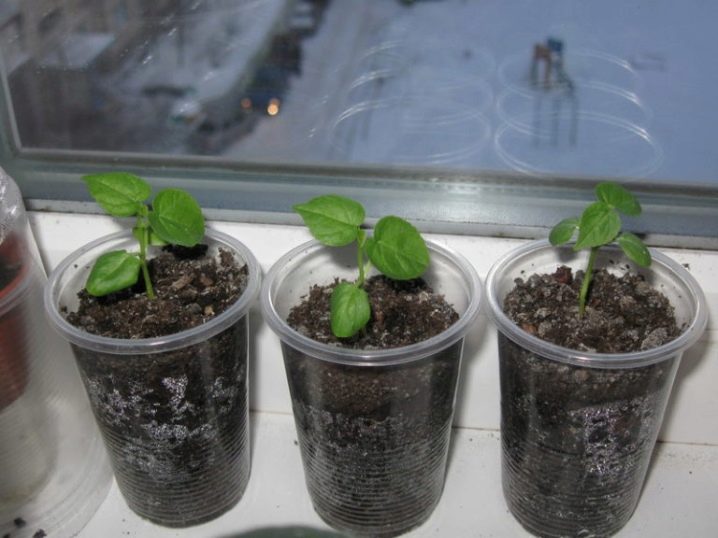
Rooting
The appearance of 2-3 leaves on germinating hibiscus sprouts indicates the need to plant plants in separate pots. You need to plant the plants one at a time. Gaining strength, seedlings will begin to compete with each other not only in terms of water and nutrients, but also in terms of volume, this can seriously affect the shape of the shoots and reduce the decorative properties of plants. In order not to damage the developing root system, the sprouts should be watered on the eve of planting in the evening. This will allow them to be easily and without consequences removed from the soil.
Planting a seedling in a pot of prepared soil is not difficult. To do this, you need to make a depression in the ground with a stick or even your finger, where you gently lower the root of the seedling. Then, without tamping, sprinkle the hole with earth. After planting, the plant must be watered.
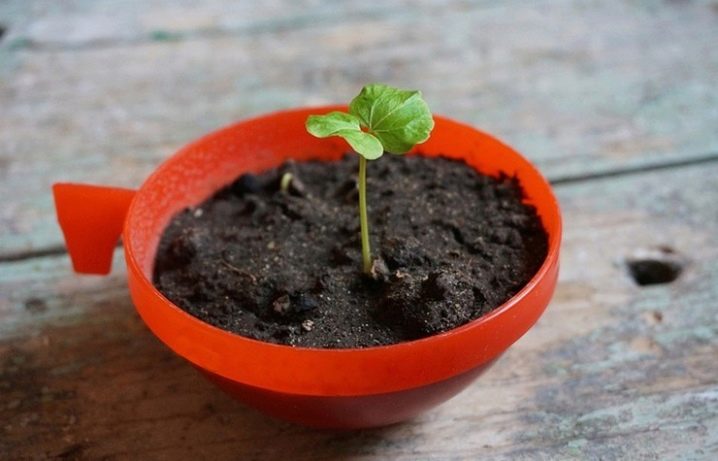
Care after the procedure
Hibiscus is an inhabitant of humid forests. Creating comfortable conditions for him, you need to organize regular watering. The plant is especially active in absorbing water and solutions from the soil during the period of active growth, that is, in summer. Some flower growers recommend watering the seedlings daily, the main thing is to avoid stagnant water.
With a lack of moisture in the plant, the leaves quickly begin to wither, this is the first sign of insufficient watering.
To ensure intensive growth and development of hibiscus, fertilizers must be applied to the soil. They are especially important during flowering and fruiting. At this stage, garden potassium is added to the soil. Before flowering and during the "rest" between flowering, the hibiscus can be fed with nitrogen. Despite the fact that this element is necessary for the formation of green plant organs (leaves, buds and new shoots), an overdose of nitrogen can cause burns on the leaves.
During the period of winter dormancy, it is better to stop fertilizing altogether. Periodically, the hibiscus will have to be trimmed. This procedure is especially important after winter rest. It will awaken dormant buds and thus rejuvenate the plant.
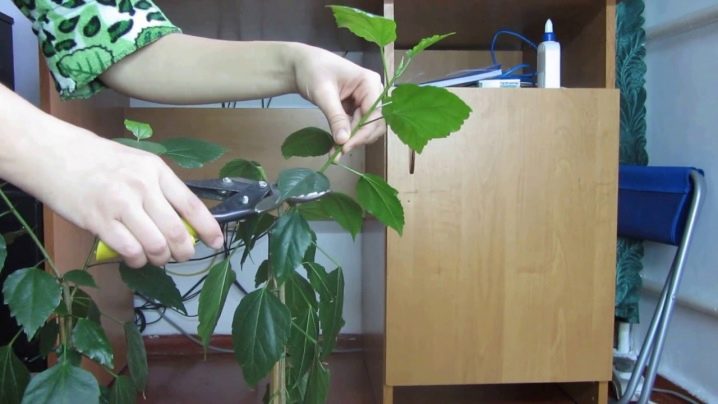
Possible problems
Yellowed leaves may indicate a lack of certain minerals in the soil or water. However, the same symptom may be due to root damage by a fungus. The plant is actively gaining green mass, but blooms poorly. One of the most probable reasons may be the abundance of nitrogen in the fertilizing, no less likely is the low temperature in the room where the plant is grown., but most often it can be caused by the aging of the shoots. A simple cropping sometimes helps to solve the problem.
During the onset of summer drought, when the soil dries out quickly, in order to avoid being affected by a spider mite, hibiscus must be sprayed with water at least 2 times a day. Hibiscus growing on a balcony or temporarily planted in a summer cottage can attract aphids. To avoid this, you need to stock up on a special insecticide.
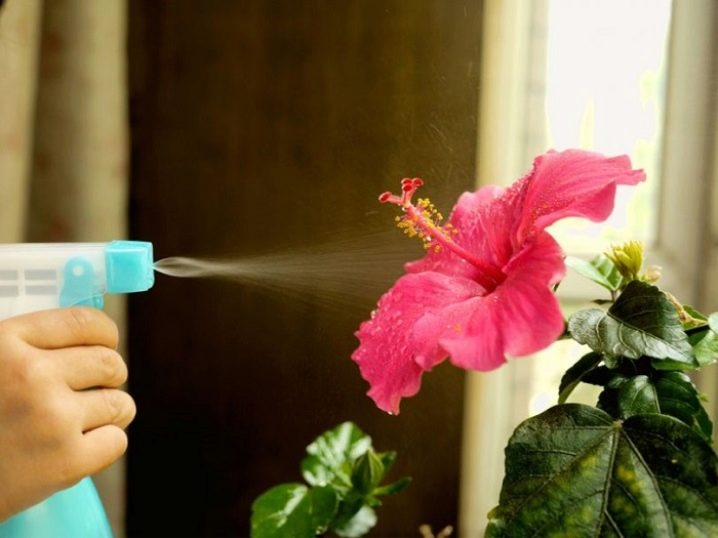






























The comment was sent successfully.